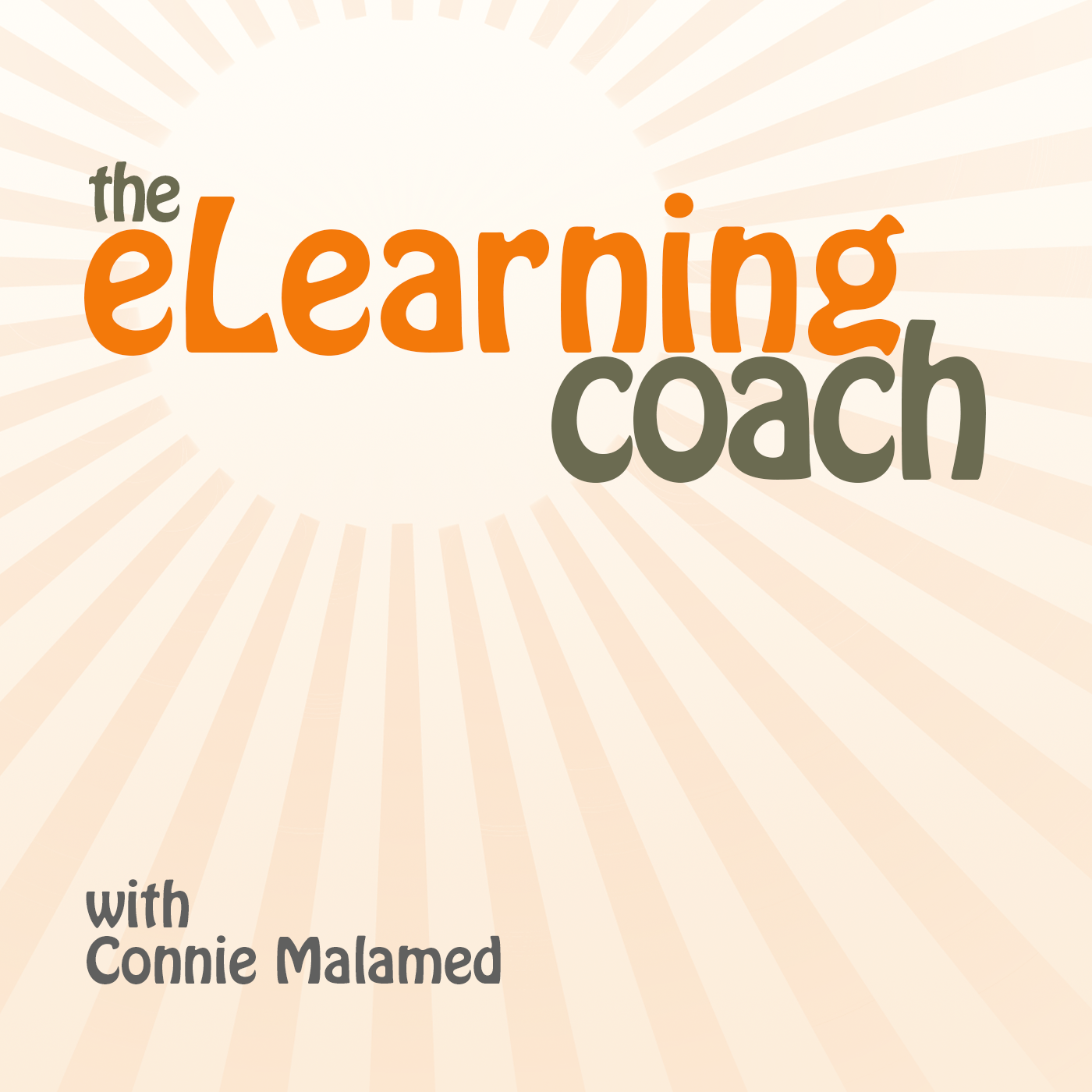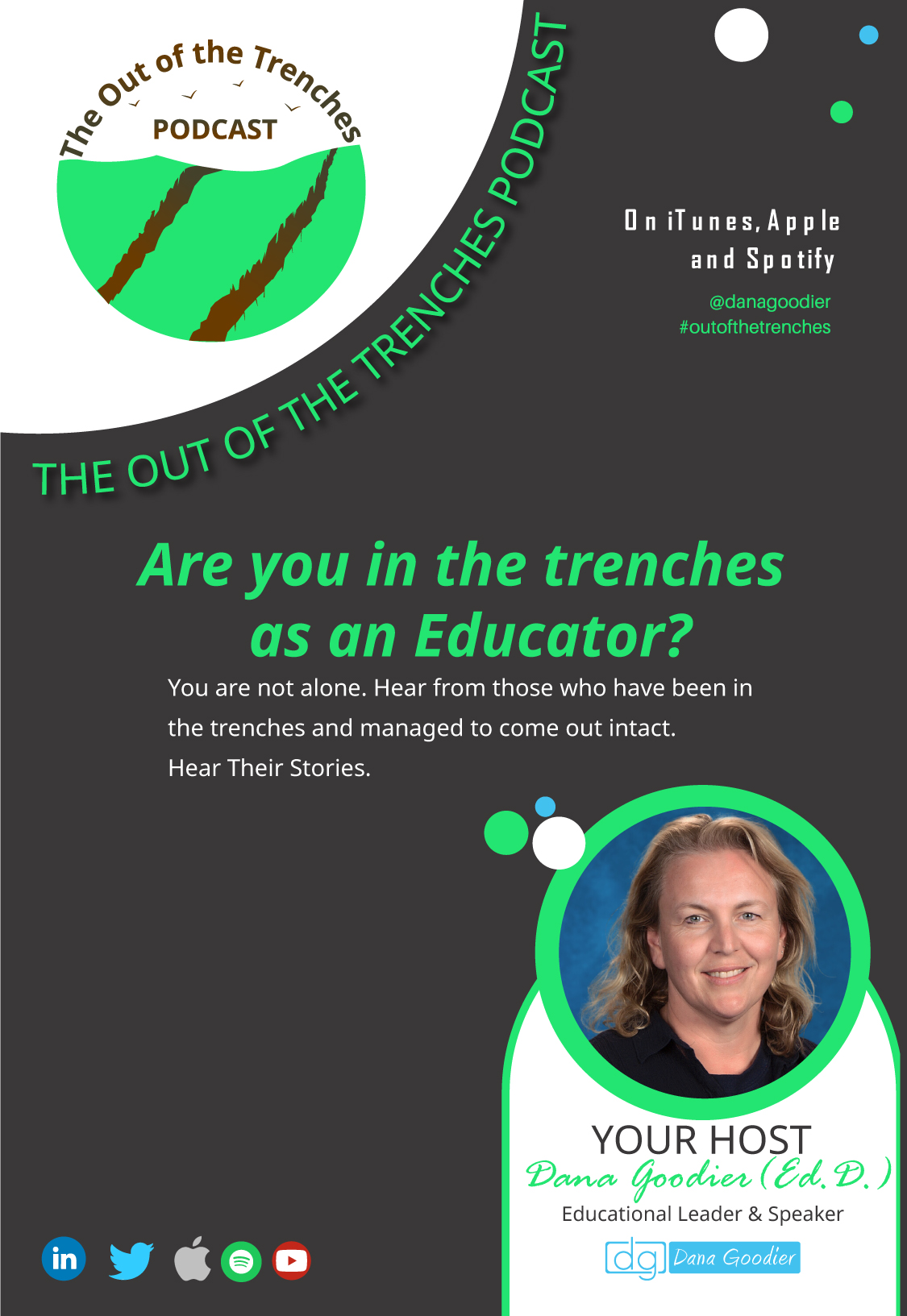
Designing with Love
Hosted by Grand Canyon University (GCU) adjunct instructor and professional instructional designer Jackie Pelegrin, this podcast explores instructional design, e-learning, and how to incorporate AI technology into different aspects of your work. Tune in for expert tips, real-world insights, and inspiring stories from students, alumni, and leaders in the field.
Designing with Love
Top Emerging Technologies Shaping Instructional Design
Five new tools are reshaping how we design for real skill: spatial computing, generative AI co‑pilots, learning analytics with xAPI, adaptive learning, and immersive simulations. In this episode, Jackie walks through practical use cases, tiny starter activities, and simple design rules so you can test what works without overbuilding or overspending. The goal is clarity over flash—short experiences that improve a behavior you can measure and explain.
Subscribe for more practical learning design strategies, share this episode with a teammate who builds content, and leave a review with the one metric you’ll track next. Your feedback helps us decide what to prototype next.
🔗 Episode Links:
Please check out the resources mentioned in the episode. Enjoy!
EDUCAUSE Horizon Report: Teaching and Learning Edition (2025): Current trends, challenges, and key technologies shaping higher education teaching and learning.
Optima’s Spatial Computing in Education: Preparing for the Next Wave: Overview of what it is, why it matters in education, tips for adopting it successfully, and case studies in action.
Tiny Pilot Card (Canva Template): Make a copy, fill it out, and run your two-week pilot. No downloads needed.
UNESCO: Guidance for Generative AI in Education and Research: Practical, human-centered recommendations for policy and classroom use. Includes ethics and safety.
xAPI (Experience API) Overview: Explains xAPI, the ecosystem, what a Learning Record Store (LRS) is used for, and how these fit into learning design.
Join PodMatch!Use the link to join PodMatch, a place for hosts and guests to connect.
Disclaimer: This post contains affiliate links. If you make a purchase, I may receive a commission at no extra cost to you.
💟 Designing with Love + allows you to support the show by keeping the mic on and the ideas flowing. Click on the link above to provide your support.
☕ Buy Me a Coffee is another way you can support the show, either as a one-time gift or through a monthly subscription.
🗣️ Want to be a guest on Designing with Love? Send Jackie Pelegrin a message on PodMatch, here: Be a guest on the show
🌐 Check out the show's website here: Designing with Love
📱 Send a text to the show by clicking the Send Jackie a Text link above.
👍🏼 Please make sure to like and share this episode with others. Here's to great learning!
Hello, and welcome to the Designing with Love Podcast. I am your host, Jackie Pelegrin, where my goal is to bring you information, tips, and tricks as an instructional designer. Hello, instructional designers and educators. Welcome to episode 79 of the Designing with Love Podcast. Today we're unpacking five emerging technologies shaping how we design learning, including what they are, when to use them, charter ideas you can use in your projects, and what to watch out for so you don't overbuild or overspend. So grab your notebook, a cup of coffee, and settle in as we explore this topic together. To kick us off, let's start with the learning spaces themselves. Module one, spatial computing. When I say spatial computing, I'm talking about three tools virtual reality, augmented reality, and mixed reality, often shortened to VR, AR, and MR. Let's take a few moments to review the differences between each one. Virtual reality places learners inside a fully digital environment. Augmented reality AR overlays digital information onto the real world through a phone, tablet, or glasses. Mixed reality MR anchors digital objects into the physical space so learners can interact with them as if they're really there. Here's some best fit use cases, skills practice, complex systems, labs, empathy building scenarios, and site tours. Here's some ideas for a starter activity. A microSIN lab. Here you can introduce a five-minute walkthrough with three decision points. An AR object study. Here you can place a 3D model in the room, then let learners annotate three features and record a 60-second reflection. Here's some design tips. Script for actions, not lectures, keep segments under seven minutes, and add a quick debrief related to the objectives. Here's some key considerations. Motion comfort and breaks, offer non-headset alternatives, plan device checkout and cleaning, and a one-minute calibration. Great, so we've explored immersive spaces. Now let's meet the helpers that speed up design and coaching. Module two, generative artificial intelligence co-pilots and teaching agents. By generative artificial intelligence, I mean tools that help draft, summarize, quiz, coach, or role play, always with our human judgment in the loop. Here's some best fit use cases. First draft storyboards, scenario seeds, quiz item banks, tutoring hints aligned to your rubric, and translation and reading level adjustments. Here's some ideas for a starter activity. A course copilot. Here you can add frequently asked questions as a helper that gives rubric aligned hints and links to your sources. A rapid prototype. Here you can ask for three scenario shells and human edit one into a final draft. Here's some design tips. Lock learning objectives before your prompt, require sources or citations in outputs, and publish a simple AI use slide for learners. Here's some key considerations. Accuracy, which refers to hallucinations, privacy, bias, and over automation. State what AI can and can't do and how you'll review it. Those activities create a trail of learning actions. The next step is making the data useful. Module three, learning analytics and experience API data trails. This is about measuring meaningful actions, not just completed, and sending them to a learning record store. Experience API, known as XAPI, lets you capture rich events such as video scrubs, simulation retries, and hint usage across tools and store them in a learning record store known as LRS, not only your learning management system known as the LMS. Here's some best fit use cases. Finding struggle points, measuring practice quality, improving simulations, and correlating behaviors with outcomes. Here's some ideas for a starter activity, an action map. Pick five key actions such as attempted critical step, emit X API to a learning record store, and review weekly. A nudge loop. Trigger adjust in time support message after three failed attempts. Here's some design tips. Start with one evaluation question. Where do learners stall? Instrument only those events and plan a 10-minute review cadence. Here's some key considerations. Data privacy and retention policies. Make sure to keep dashboards simple to avoid analysis paralysis. Once we can see where learners struggle or succeed, we can respond in real time. Module four Adaptive Learning and Personalization. Adaptive learning adjusts the path, difficulty, or supports in real time based on what the learner just did. Here's some best fit use cases, mastery-based courses, compliance refreshers, and large cohorts with varied prior knowledge. Here's some ideas for a starter activity. Two-lane pathing. Here you can add a pre-assessment that routes learners to a refresh or stretch track with different practice sets. Unlock just-in-time cues after specific error patterns. Here's some design tips. Build strong practice item banks per objective. Define mastery rules, and explain the logic to learners so it feels fair. Here's some key considerations. Transparency, which is why a path was chosen, avoiding over fragmented routes, and offering a manual override when needed. With the pathways in place, let's bring it together in a safe, practice first environment. Module five, immersive simulations and virtual labs. Think branching conversations and hands-on labs where learners can safely try, fail, and try again. Here's some best fit use cases, safety procedures, leadership conversations, customer service, lab techniques, and gray area compliance. Here's some ideas for a starter activity. Three fork scenario. Here you can introduce a five-minute dialogue with three decision torques and a short debrief checklist. Virtual lab sprint. Here you can introduce one critical procedure with a timed critical step moment and immediate feedback. Here's some design tips. Write outcomes first, then storyboard choices, and include a two-minute microreflection to cement transfer. Here's some key considerations. Scope control. Cap unique screens, reuse media or assets across modules, and pilot with a small group first. Before you choose a tool, here's a fast way to structure a lesson that uses any one of these technologies. Quick Build, 60 minute lesson recipe plug and play. Your hook, which is five minutes, a short story or statistic plus clear outcomes. Teach, which is 10 minutes, one visual that explains the core idea. Experience, which is 15 minutes. Choose one, short VR or AR moment, a three fork scenario, or an adaptive quiz book. Debrief, which is 10 minutes, three reflection prompts tied to the objectives. Assess, which is 15 minutes, performance tasks plus rubric. Then log key actions with experience API. Before you hit record on your pilot, let's decide how you'll know it worked, simply and clearly. Metrics that matter. Why, what, and how? Quick context. These aren't vanity numbers. Metrics answer one question. Did this help learners do the thing we care about? We'll pick one outcome, one behavior signal, and one follow-up check. Start with one outcome question and make sure to pick one. Did learners perform the target skill correctly? Did struggling learners reach mastery with less friction? Did the new approach save time without lowering quality? Then you'll want to match the question to a simple metric trio. Outcome metric, the skill result you care about, such as a pass or fail on a performance test. Behavior signal, a leading indicator that moves first, such as time to first success. And then finally the follow-up check. A light pulse a week later, such as a three question microquiz or manager checklist. Then you're going to move into concrete examples by technology. Make sure to choose one set. Set one, spatial computing, VR, AR, or MR. What's the outcome? Percentage of learners completing the five-step procedure without critical error. What's the behavior? Time to first success in the SIM and number of retries. Follow up. One item motion comfort check and three question refresher next week. Set two. What's the outcome? Rubric score improvement on the final artifact. What's the behavior? Edit distance from AI draft to final. How much human revision was needed? Follow up. Source citation rate. AI outputs with citation learners actually verified. Set three. Learning analytics, an experience API. What's the outcome? Percentage of learners clearing the previously stuck step. What's the behavior? Average attempts before success and hint usage rate. Follow-up. Targeted nudge recipients versus non recipients. Who succeeded in the next attempt? Step four. Adaptive learning and personalization. What's the outcome? Mastery rate after rerouting, which is known as a refresh versus stretch. What's the behavior? Path accuracy. Did the system send the right learners to the right path? And then the follow-up. Manual override usage. How often learners or instructors change the path? Set five. Immersive simulations and virtual labs. What's the outcome? Correct decision rate on the second attempt, which signals evidence of learning, not guessing. What's the behavior? Critical error frequency and debrief reflection completion rate. Follow up, one week transfer check, which could be a mini scenario or observation checklist. How to capture it? Keep it light. Use your LMS quiz or task scores and attempt data. If instrumented, send key events with experience API to a learning record store. Add a single item survey such as comfort, confidence, or usefulness at the end of the pilot. Cadence and storytelling. Schedule a 10-minute weekly review. Look at three numbers, pick one, tweak, and ship. Create a one slide pilot card. Objective, change result, then the next step. Share wins with learners because transparency builds buy-in. Here's some key considerations. Respect privacy. No public comparisons between individuals, which is key here. Avoid tiny sample overclaims and keep dashboards simple. One page is plenty. If you publish externally, spell out key performance indicators known as KPIs on first use. With a simple way to measure impact in place, let's turn one idea into a tiny pilot you can ship this month. Here's your call to action. Pick one technology from today and run a tiny pilot in the next two weeks. Keep it small, clear, and measurable. Here's some ideas you can choose from. Three fork conversation scenario, which is the immersive simulation, five minutes, three decision forks, and a quick debrief. AR object study, which is spatial computing, one 3D model, three annotations, and a 60 second reflection. Course co-pilot or FAQs, which is generative AI, a short, rubric aligned helper for common questions. Here's your quick checklist. Objective one sentence, what skill or behavior are we improving? Plan. Who is in the pilot? And when will it run? Measure. One outcome, one behavior signal, and one follow-up check. Debrief. Two questions. What worked and what will we tweak? And then finally document. Fill in the pilot card and save version 1.0. You've got your idea and a simple way to track it. Let's land the plane. Emerging technology shines when it makes learning clearer, safer, or faster, not when it's just shiny. Start small, learn fast, and keep the focus on what your learners need to do. I'll link four helpful references in the show notes and the companion blog post. First is the EduCause Horizon Report, Teaching and Learning Edition for Trend Context. Next is UNICECO's guidance on AI and education for ethics and classroom guardrails. The third one is the XAPI overview for an explanation about the ecosystem. And finally, a short spatial computing and education guide for VR, AR, and MR setups. In addition, I've included a one-page pilot card, which is a Canva template link in the show notes and the companion blog post. Open it, click Use Template, and make it your own. As I conclude today's episode, I would like to share an inspiring quote from Alan Kay, a pioneer of modern computing. The best way to predict the future is to invent it. Rather than predict what VR, AR, MR, AI, or XAPI will do for us, we build a timely pilot and learn. We invent our future by prototyping, measuring, and iterating. One focused step at a time. Thank you for taking some time to listen to this podcast episode today. Your support means the world to me. If you'd like to help keep the podcast going, you can share it with a friend or colleague, leave a heartfelt review, or offer a monetary contribution. Every act of support, big or small, makes a difference, and I'm truly thankful for you.
Podcasts we love
Check out these other fine podcasts recommended by us, not an algorithm.

Buzzcast
Buzzsprout
Podcasting Made Simple
Alex Sanfilippo, PodMatch.com
The eLearning Coach Podcast
Connie Malamed: Helps people build stand-out careers in learning design.
Dear Instructional Designer
Kristin Anthony
The Visual Lounge
TechSmith Corporation
Wake Up the Lions!
Rory Paquette
Seven Mile Chats
Julia Strukely
Revelations with Cole Johnson
Cole Johnson
The Way I Heard It with Mike Rowe
The Way I Heard It with Mike Rowe
The KAJ Masterclass LIVE
Khudania Ajay
Book 101 Review
Daniel Lucas
LOVE Letters
Daniel Lucas
Mental Health 101
Daniel Lucas/G.Mick Smith
Movie 101 Review
Daniel Lucas And Bob LeMent
Abstract Essay
Daniel Lucas /Sal Cosenza
The Talking Silkworm Podcast
Talking Silkworm
Daniel Bernabe. Daily Inspirational Quotes.
Daniel Bernabe
Relatable Wisdom
Wisdom
My Podcast Story
Wisdom
The Out of the Trenches Podcast
outofthetrenches
Conversations with Rich Bennett
Rich Bennett
The WallBuilders Show
Tim Barton, David Barton & Rick Green

